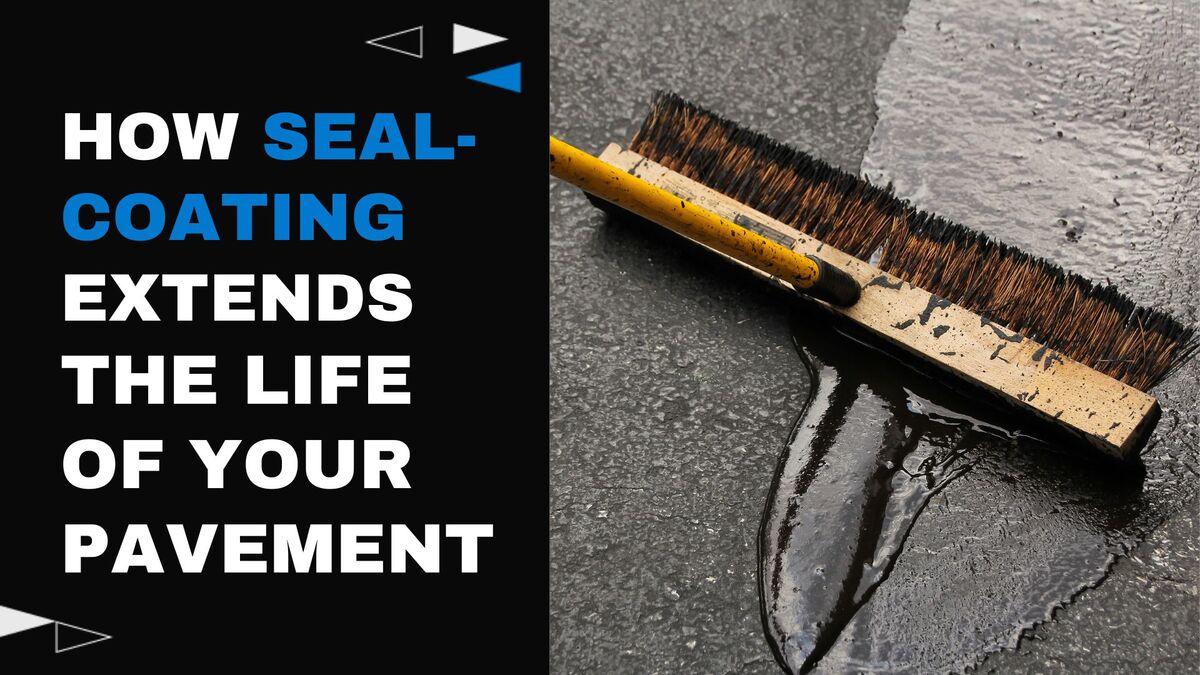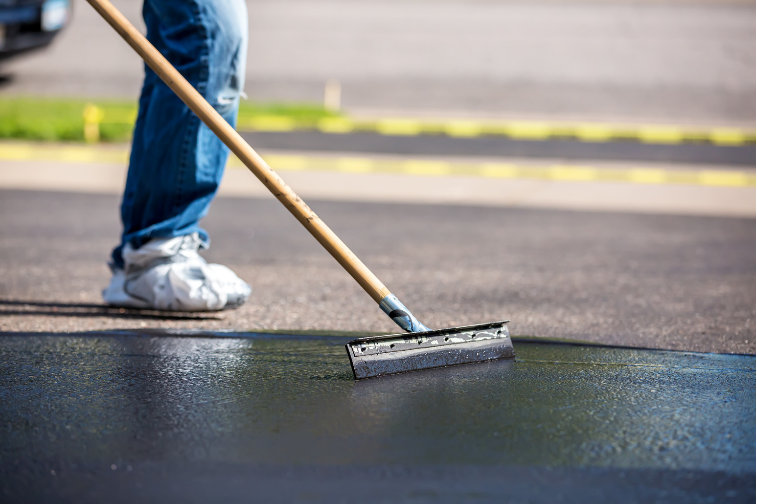How Sealcoating Extends the Life of Your Pavement

It’s easy to assume once asphalt is installed, it’s good to go for years. The reality is that without added protection, even the best pavement won’t hold up for long.
Asphalt may look tough, but without the right protection, it’s vulnerable to UV rays, water, chemicals, and temperature shifts that slowly chip away at its strength. Over time, what starts as surface discoloration or hairline cracks can lead to potholes, erosion, and expensive structural damage.
If you’ve ever had to approve a costly patch or full resurfacing job, you know how quickly those expenses add up. That’s where sealcoating comes in, not as an afterthought, but as a smart, preventative strategy that shields your surface from daily wear and extends its life. It’s a simple step that helps protect your investment, maintain curb appeal, and stretch your maintenance budget farther.
In this article, we’ll break down how sealcoating works, the significance of timing, and what it can do to keep your pavement performing longer and looking better.
Why Preventive Maintenance Is Worth It
Routine care plays an important role in both the appearance and long-term performance of your asphalt. When sealcoating is done at the right time, it works like insurance for your pavement, helping you avoid the bigger issues that develop when maintenance is delayed.
What Happens to Untreated Asphalt Over Time
Without regular upkeep, asphalt slowly loses its durability. Oxidation dries out the surface, making it brittle and more vulnerable to cracking. UV rays and water seep in, breaking down the pavement’s structure from the top down. Over time, small issues turn into bigger ones, and surface damage becomes harder and more expensive to repair.
The Cost of Delaying Maintenance
Postponing maintenance might save you time now, but it often leads to significant costs down the road. Minor cracks can grow quickly, eventually requiring full-depth repairs. Water intrusion speeds up sub-base failure, and each season of exposure increases the likelihood of long-term damage.
If you’ve been wondering how weather contributes to this deterioration, be sure to read our article on how seasonal changes can have an impact on your pavement’s performance.

What Sealcoating Does for Asphalt Pavement
Sealcoating adds a critical layer of defense. When applied at the right time, it protects your asphalt from a range of common threats while improving its overall condition.
Creates a Protective Barrier
Sealcoating shields pavement from oxidation, UV rays, and moisture. It also helps fill minor surface voids, which slows the rate of deterioration. On top of that, it limits damage from oil drips, gasoline, and de-icing materials that would otherwise eat away at the surface.
Extends Functional and Aesthetic Life
Sealcoating maintains flexibility in the asphalt, which helps prevent cracking caused by movement or stress. It also restores that clean, rich black finish, improving curb appeal across commercial lots and driveways alike.
When applied regularly, sealcoating can extend the lifespan of your pavement by five to seven years, making it a smart investment for both performance and appearance.
When and How to Sealcoat for Best Results
Getting the most value out of sealcoating means knowing when and how to apply it. Good timing and proper preparation are essential to lasting results.
Ideal Timing and Frequency
Sealcoating should typically be done every two to three years, depending on traffic levels and environmental exposure. Spring and fall are ideal seasons, offering the moderate temperatures needed for the sealer to cure properly. It’s also important to wait until new asphalt has fully cured, usually about 90 days, before applying a sealcoat.
Steps in the Sealcoating Process
A well-executed sealcoating job begins with surface preparation. The area is thoroughly cleaned, with any debris or oil spots removed. Cracks or damage are repaired to prevent sealing over problem areas. Then, a high-quality sealer is applied and given the proper time to cure. Traffic should be restricted for 24 to 48 hours to let the surface set completely.
.png)
Common Questions About Sealcoating
Even if you’re familiar with asphalt maintenance, you might still have questions about what sealcoating can do. Here are a few common topics that come up when planning a project.
Does Sealcoating Fix Cracks?
Sealcoating helps slow crack development, but it’s not a repair method for existing damage. Any cracks should be properly filled before the sealcoat is applied to make sure the surface is protected and visually uniform.
How Long Does It Take?
Most sealcoating projects are completed in a single day, though the drying time can vary depending on weather, humidity, and pavement conditions. Planning around the forecast helps prevent delays and gives the surface the best chance to cure effectively.
Is It Really Necessary?
Yes, sealcoating is one of the most cost-effective ways to protect your pavement and stretch your maintenance budget. It slows deterioration, adds years of functional life, and minimizes the need for large-scale repairs later.
Protect Your Investment with Pinnacle Paving
Your pavement is one of the first things people see, but more importantly, it’s one of the most exposed assets on your property. Without regular maintenance like sealcoating, even a well-built surface can deteriorate faster than expected.
Sealcoating is a straightforward, cost-effective way to reduce long-term wear, minimize repair needs, and preserve both the appearance and performance of your asphalt.
At Pinnacle Paving, we will help you get ahead of the damage. With expert application, clear communication, and a commitment to quality, we offer sealcoating services that keep your surface strong season after season.
Take the next step toward extending the life of your pavement. Contact us today to schedule your consultation.

